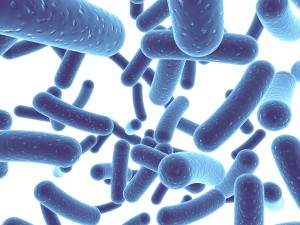 The prevalence of food allergies in the developed world is rising at an alarming rate. In the United States alone, food allergies currently affect 15 million people. That number is expected to skyrocket because between the years 1997 and 2011, the number of children identified with food allergies rose by almost 50%. Doctors have been baffled about the reason for this increase, but new research might finally be shedding a light on the mystery.
The prevalence of food allergies in the developed world is rising at an alarming rate. In the United States alone, food allergies currently affect 15 million people. That number is expected to skyrocket because between the years 1997 and 2011, the number of children identified with food allergies rose by almost 50%. Doctors have been baffled about the reason for this increase, but new research might finally be shedding a light on the mystery.
A research study from the University of Chicago has demonstrated that mice without the bacterium Clostridia are significantly more likely to develop an allergy to peanuts. These bacteria live on the intestinal wall of healthy mammals and help reduce access to the bloodstream by food allergens. Without Clostridia present, food allergens are able to enter the bloodstream and provoke an immune response that manifests itself as an allergic reaction.
There are multiple reasons why Clostridia have been disappearing from the digestive tracts of people throughout the developed world, but all of the reasons are related to the 21st century lifestyle that is so prevalent in these nations. Antibiotics, high-fat diets, antimicrobial soaps, formula feeding, and even caesarean births affect the microflora of our bodies. For example, the average child in the United States has taken three courses of antibiotics by the time he or she is 2 years old.
Cathyrn Nagler is the lead author for this new research study and she makes the observation, “We have co-evolved with our microbiota for millennia. It seems that a consequence of some of our 21st-century lifestyle habits has been the disruption of our relationship with the communities of commensal (friendly) bacteria that reside on our skin and mucosal surfaces, and particularly in the gut.”
The importance of beneficial microflora to our health wasn’t established until the late 1990’s when the idea became generally recognized in the scientific community. Microflora live both on the inside and the outside of our bodies. In fact, there are close to 100 trillion of these helpful creatures that are part of each and every one of us. To put that number in perspective, it is approximately 10 times the number of cells in the entire human body. As research continues, expect to hear a lot more about microflora and our health.
For more information, read the original article at LiveScience with some background information at Nature.





